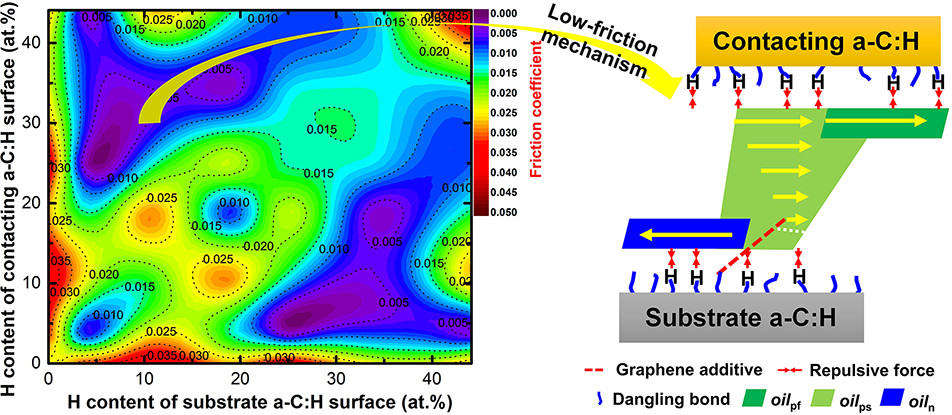Insights into Superlow Friction and Instability of Hydrogenated Amorphous Carbon/Fluid Nanocomposite Interface
-
Authors :
Xiaowei Li, Xiaowei Xu, Jianwei Qi, Dekun Zhang, Aiying Wang, Kwang-Ryeol Lee
-
Journal :
ACS Applied Materials & Interfaces
-
Vol :
13
-
Page :
35173-35186
-
Year :
2021

Abstract
Hydrogenated amorphous carbon (a-C:H) film exhibits the superlubricity phenomena as rubbed against dry sliding contacts. However, its antifriction stability strongly depends on the working environment. By composting with the fluid lubricant, the friction response and fundamental mechanisms governing the low-friction performance and instability of a-C:H remain unclear, while they are not accessible by experiment due to the complicated interfacial structure and the lack of advanced characterization technique in situ. Here, we addressed this puzzle with respect to the physicochemical interactions of a-C:H/oil/graphene nanocomposite interface at atomic scale. Results reveal that although the friction capacity and stability of system are highly sensitive to the hydrogenated degrees of mated a-C:H surfaces, the optimized H contents of mated a-C:H surfaces are suggested in order to reach the superlow friction or even superlubricity. Interfacial structure analysis indicates that the fundamental friction mechanism attributes to the hydrogenation-induced passivation of friction interface and squeezing effect to fluid lubricant. Most importantly, the opposite diffusion of fluid oil molecules to the sliding direction is observed, resulting in the transformation of the real friction interface from a-C:H/oil interface to oil/oil interface. These outcomes enable an effective manipulation of the superlow friction of carbon-based films and the development of customized solid–fluid lubrication systems for applications.
















